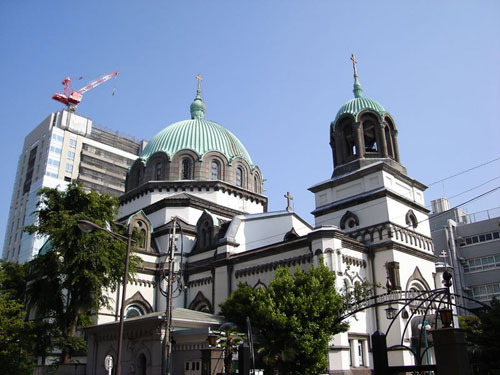Holy Resurrection Cathedral in Tokyo, Japan



Holy Resurrection Cathedral also known as Nicholai-do in Chiyoda, Tokyo, is the main cathedral of the Japanese Orthodox Church. The Cathedral was completed on 8 March 1891, construction having begun seven years earlier. The edifice was designed by Dr. Michael A. Shchurupov and built by Japanese artisans. The cathedral was built on a site in Kanda selected by Archbishop Nicholas (Kasatkin), now St. Nicholas of Japan, the founder of the Orthodox Church in Japan. The site is on a height that overlooked the Imperial Palace. Today it is hidden among the many tall buildings erected since the 1960s. St. Nicholas toured Russia raising funds for the Cathedral. The original Cathedral was seriously damaged in the Great Kantō earthquake of September 1923.
In the Great Kantō earthquake the main bell tower fell on the dome, collapsing it, thus causing major damage to the Cathedral. Rebuilding the cathedral became a major task for the then-ruling bishop, Archbishop Sergius (Tikhomirov), who succeeded St. Nicholas after he died in 1912. Since Russia was no longer a source of funding, Archbishop Sergius had to look for funding within Japan. A significant amount of funds was raised by numerous concerts by the Cathedral choir, led by Victor A. Pokrovsky. The re-built Cathedral was re-consecrated in 15 December 1929, with a shorter bell tower, a modified dome, and a less ornate interior.